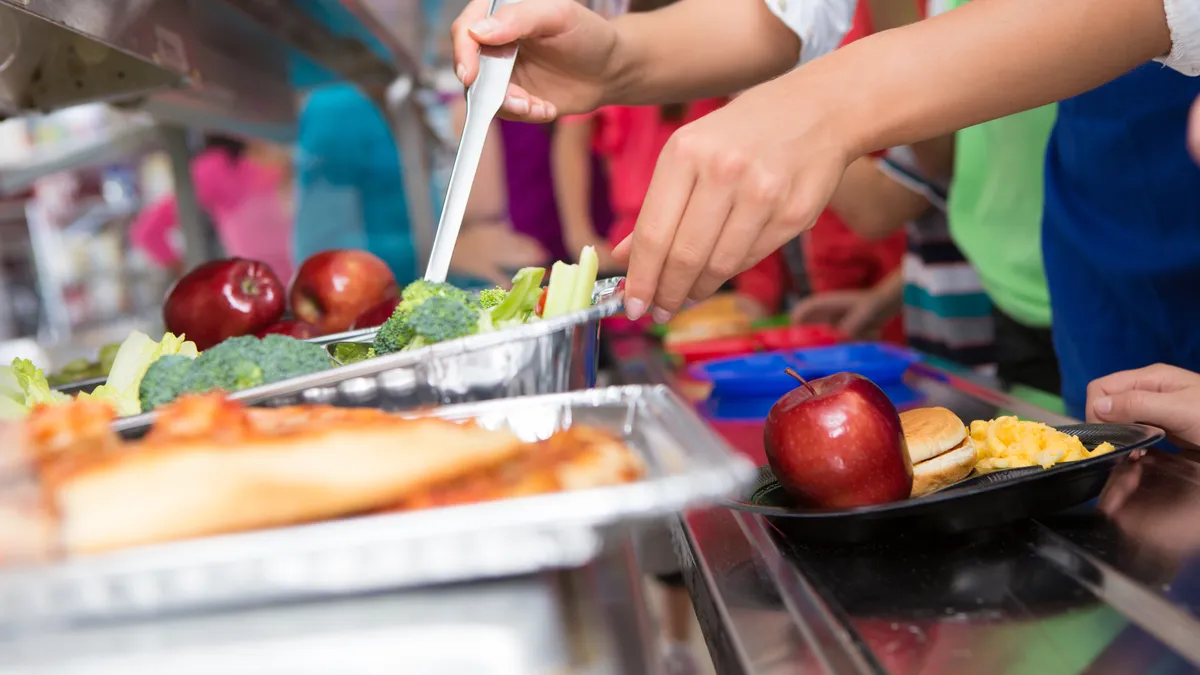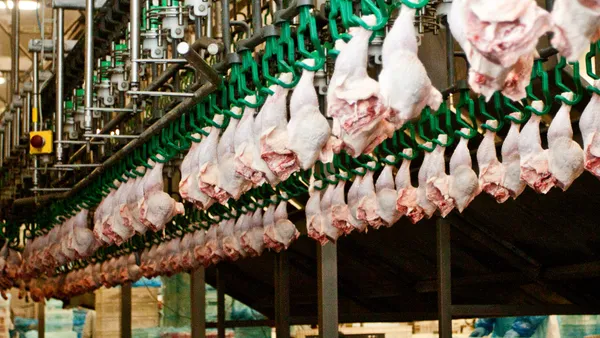Dive Brief:
-
The U. S. Department of Agriculture should find a way to routinely or systematically identify and address operational challenges in its Foods in Schools program, which districts rely on to purchase lean meat and produce, according to a new report from the Government Accountability Office.
-
States faced major challenges in running the program in the 2021-22 school year. Chief among them were delivery issues, which were cited by nearly 30% of states as a major challenge and another 22% as a minor challenge.
-
Additional obstacles included price fluctuations, vendor participation, inventory management and minimum order sizes. While more than half of states said they were satisfied with the program, 21 said they needed more help.
Dive Insight:
Although delivery issues — such as cancellations, delays and receiving less food than expected — existed prior to the pandemic, the challenge worsened during COVID-19. In 2021, for example, district food nutrition directors reported that supply chain issues led to both delivery delays and a shortage of food items — leaving schools scrambling to replace missing items and alter menus.
School food authorities interviewed by the GAO said workarounds included making last-minute substitutions to their cafeteria menus or repeatedly serving the same meals for days.
Currently, the USDA only identifies and addresses such operational challenges for its Food in Schools program on an ad hoc basis.
"Without a mechanism to identify and address challenges, USDA may miss opportunities to respond to risks and achieve the program's main objective — providing domestic foods for nutritious meals," the GAO said in its report released July 14.
More timely communication and more opportunities to learn promising practices were among the most common requests from states that wanted more help.
The GAO is recommending that the USDA:
- Ensure guidelines for timely communication with states on the Foods in Schools Program.
- Systematically identify and share promising practices and lessons learned with states.
- Routinely and systematically identify and address challenges to operating the program.
The USDA agreed to all three recommendations in its response to GAO findings contained in the report.
Currently, about 15% to 20% of foods used in school lunches are purchased through USDA's Foods in Schools program, according to the report. Between the 2014-15 and 2020-21 school years, local food authorities spent more than $625 million on average on beef and poultry through the program. In that time period, purchases for fresh produce also tripled.












